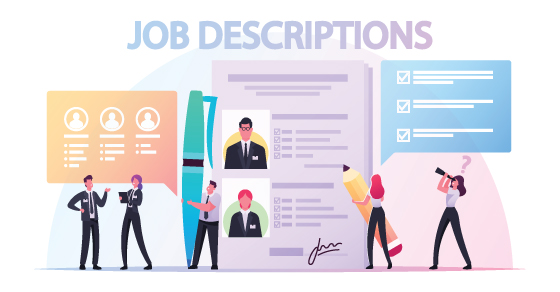
Are Your Company’s Job Descriptions Pulling Their Weight?
At many businesses, job descriptions have it easy. They were “hired” (that is, written) many years ago. They haven’t had to change or do anything, really, besides get copied and pasted into a want ad occasionally. They’re not really good at what they do, but they’re used again and again because everyone assumes they’re just fine.
The problem is, they’re not. Outdated, vague or inaccurate job descriptions can lead to longer hiring times, bad hires, workplace conflicts and even legal exposure in employment law actions. So, now the million-dollar question: Are your company’s job descriptions pulling their weight?
Review and revise
There’s only one way to find out: Conduct a thorough review of your job descriptions to determine whether they’re current and comprehensive.
Check to see whether they list outdated procedures or other outmoded elements, such as software you’ve long since phased out. As necessary, carefully revise the wording to describe the duties and responsibilities for a particular position as it exists today.
If you don’t already have formal, written job descriptions for every position, don’t panic. Ask employees in those positions to document their everyday duties and responsibilities. Each worker’s supervisor should then verify and, if necessary, help refine the description.
Put them to work
After you’ve updated or created your job descriptions, you can use them to increase organizational efficiency. Weed out the marginal duties from essential ones. Eliminate superfluous and redundant tasks, focusing each position on activities that generate revenue or eliminate expenses. You may be able to make improvements in other areas, too, such as:
Recruiting. Are you hiring people with the right skills? Up-to-date job descriptions provide a better road map for finding ideal candidates to fill your open positions.
Compensation. A complete and accurate description of the hiring requirements, job duties and responsibilities of a position provide context and rationalization for how that person is compensated.
Workload distribution. Are workloads efficiently distributed among employees? If not, rearrange them. You may find this necessary and beneficial when duties change because of revisions to job descriptions.
Cross-training. Can your employees handle their coworkers’ duties and responsibilities? In both emergencies and non-emergencies (vacations, for instance) — and as a fraud-prevention measure — having workers who are able to cover for each other temporarily is critical.
Performance management. Are employees doing their best? Detailed job descriptions allow supervisors to better determine whether workers are completing their assigned duties, meeting or exceeding expectations and growing with the company.
Stop the slackers
No business should put up with slacker job descriptions that do nothing but hang around the break room exchanging gossip and eating all the donuts. Ensure yours are actively contributing to your company’s success by managing their performance just as you do for real-live humans.
© 2021